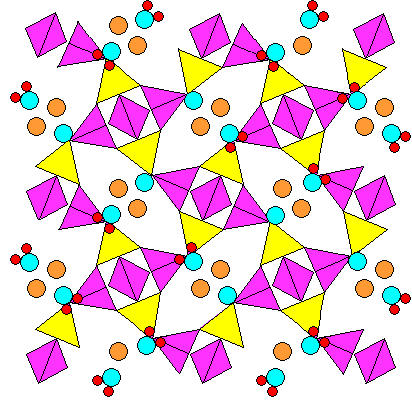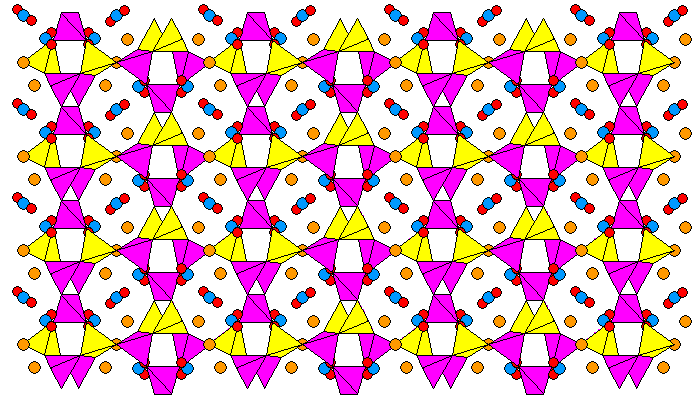Natrolite Structure
Steven Dutch, Professor Emeritus, Natural and Applied Sciences,
Natrolite is a zeolite, with a composition Na2Al2Si3O10 •2H2O.

The silica framework of natrolite consists of units with four-membered rings, with tetrahedra pointing in alternate directions. The units are bridged by tetrahedra linking pairs of tetrahedral vertices. At left, above, is a view perpendicular to a ring and at right, above, is an oblique view. Silica tetrahedra are purple, aluminum tetrahedra are yellow.

Above, a view down the c-axis. Oxygen atoms are blue, hydrogen atoms are red, sodium atoms are orange. The structure consists of columns of silica clusters with open tubes in between holding water, sodium, and other constituents. The columns are weakly joined, giving natrolite perfect prismatic cleavage. The structure looks tetragonal but is actually orthorhombic (a = 1.827, b = 1.8587, c = 0.656 nm)

View perpendicular to the c-axis. The links between units are much stronger in the a-b plane, so the units build upward, giving natrolite its characteristic acicular habit.
Return to Mineralogy-Petrology Index
Return to Thin-Section Index
Return to Crystals and Light Index
Return to Crystal Structures Index
Return to Mineral Identification Tables
Return to Professor Dutch's Home Page
Created 22 April 2013, Last Update